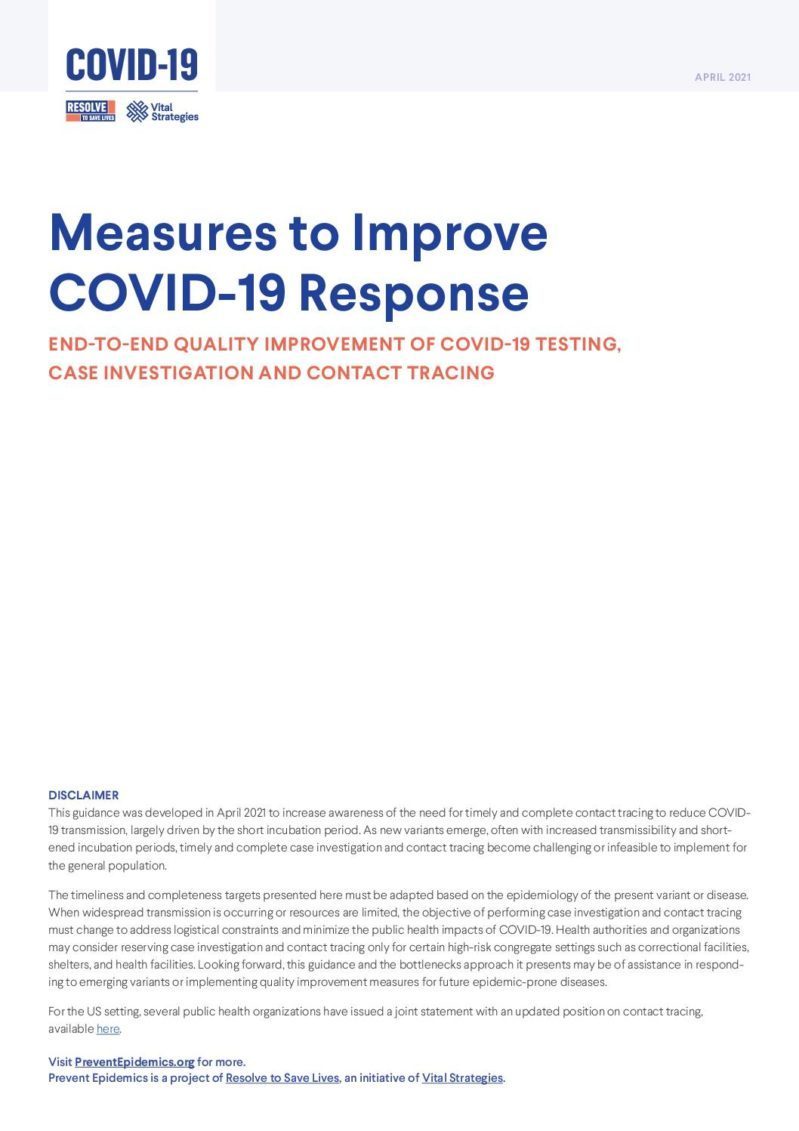Download All Country Data
This guidance was developed in April 2021 to increase awareness of the need for timely and complete contact tracing to reduce COVID-19 transmission, largely driven by the short incubation period. As new variants emerge, often with increased transmissibility and shortened incubation periods, timely and complete case investigation and contact tracing become challenging or infeasible to implement for the general population.
The timeliness and completeness targets presented here must be adapted based on the epidemiology of the present variant or disease. When widespread transmission is occurring or resources are limited, the objective of performing case investigation and contact tracing must change to address logistical constraints and minimize the public health impacts of COVID-19. Health authorities and organizations may consider reserving case investigation and contact tracing only for certain high-risk congregate settings such as correctional facilities, shelters and health facilities. Looking forward, this guidance and the bottlenecks approach it presents may be of assistance in responding to emerging variants or implementing quality improvement measures for future epidemic prone diseases.
For the U.S. setting, several public health organizations have issued a joint statement with an updated position on contact tracing, available here.




